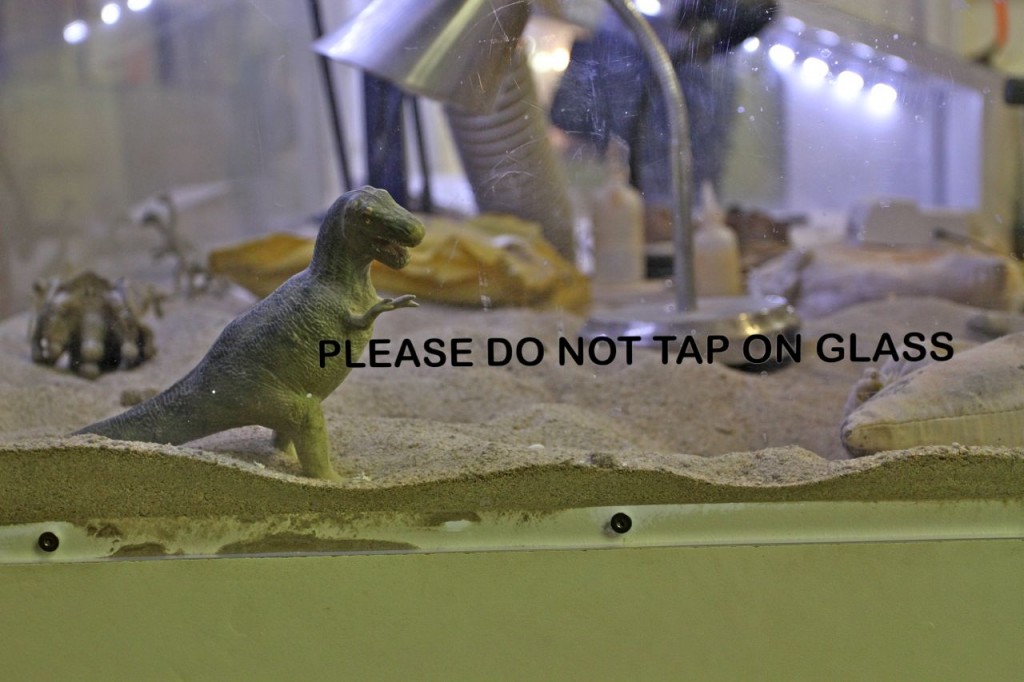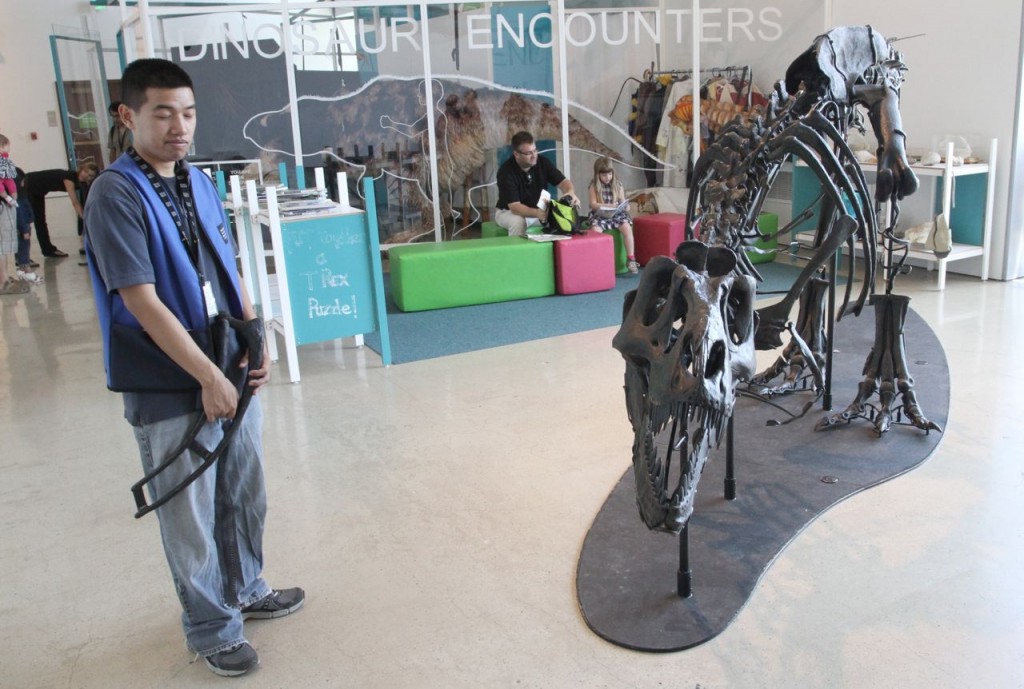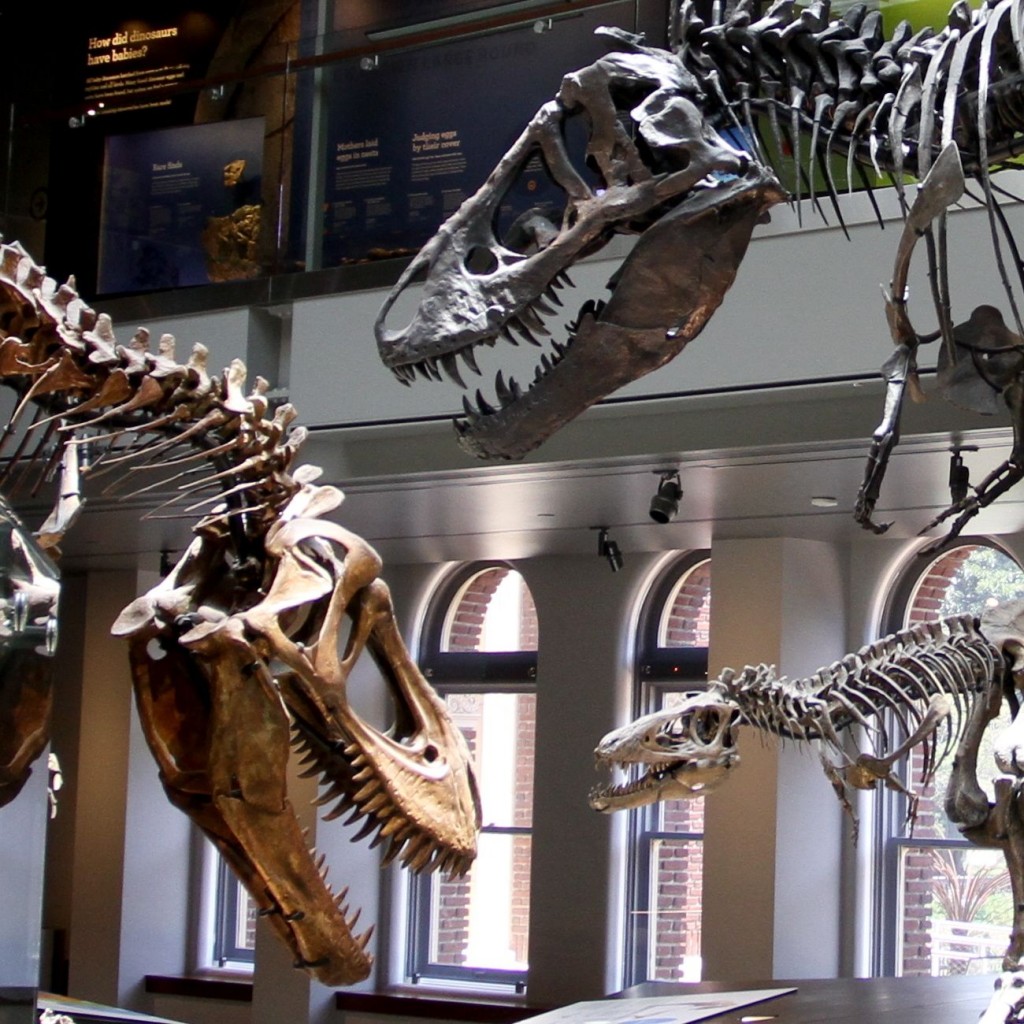
How when we dig up a dinosaur bone do we know it comes from a young animal or a smaller example of a different species? That’s a question the Museum of Natural History of Los Angeles collection of T.rex helps answer.
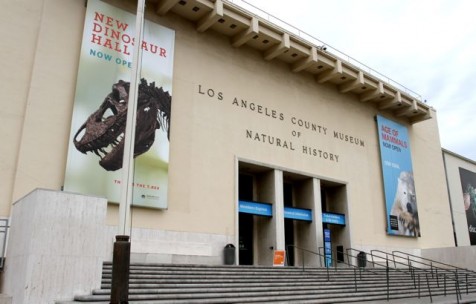
Yesterday, Erin and I visited the new Dinosaur Hall, where for the first time fossilised skeletons of three complete Tyrannosaurs are brought together to illustrate the different stages in the animal’s development.

Above you see the three who died at 17 yrs, 14 yrs, and 2 yrs.
Here’s the largest, Thomas, as he looked a couple of years back when we last visited the museum: encrusted in rock, but the star all the same of his own very public extraction in the Dino Lab:
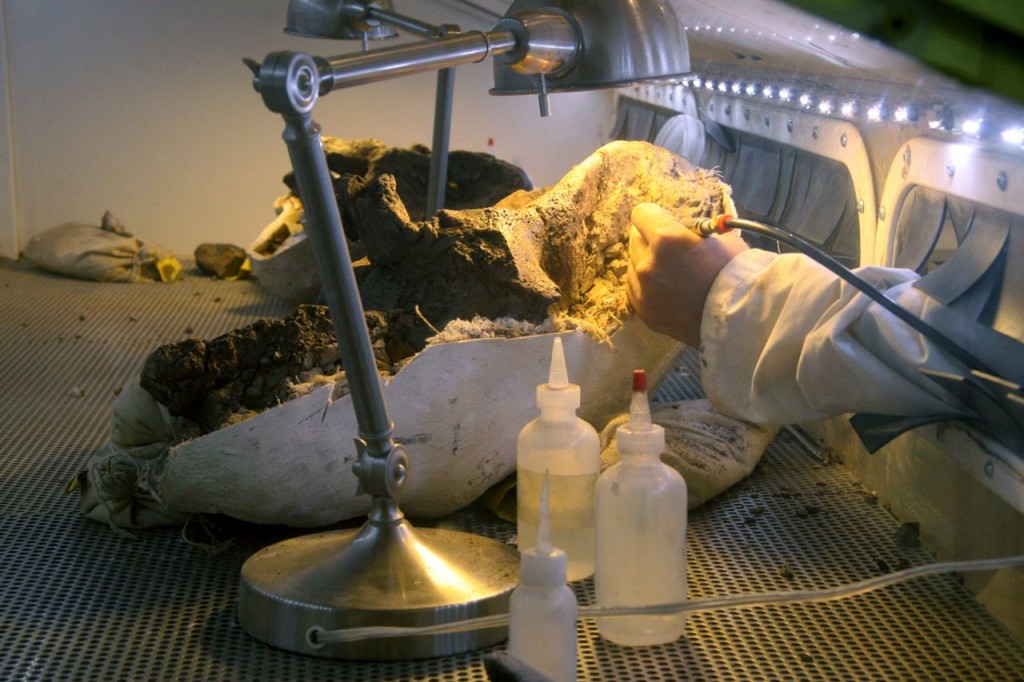
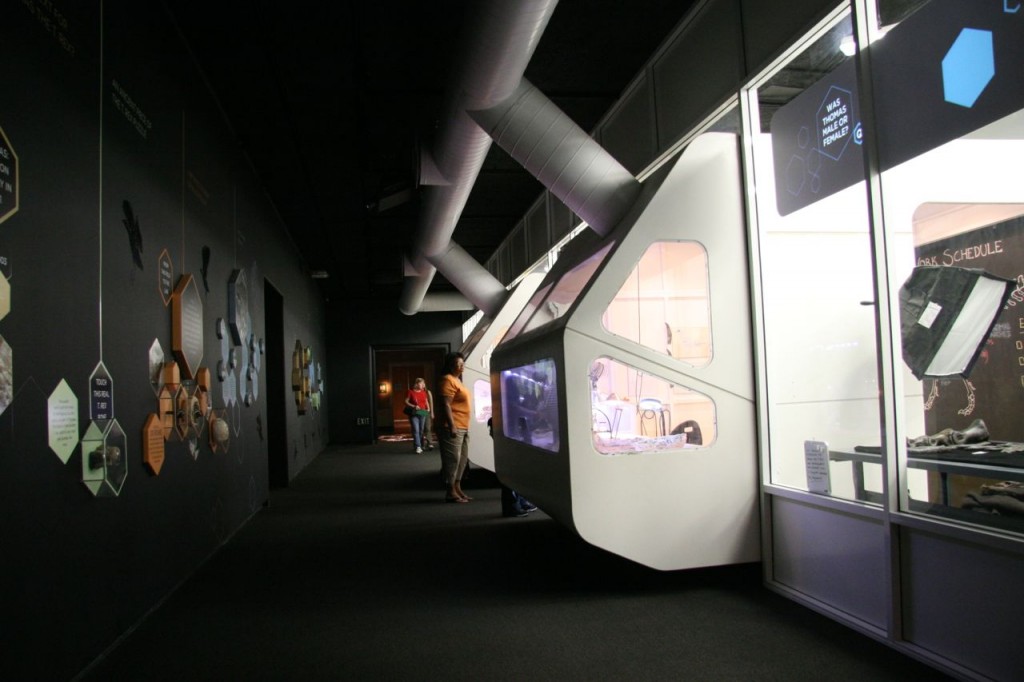
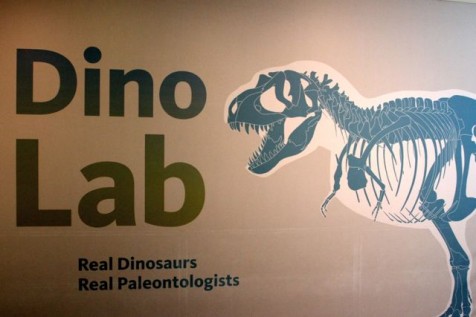 Comparing the three, we see that Tyrannosaurs don’t just scale up uniformly as they grow. The eye sockets, for example, are more rounded in babies, changing to a keyhole shape in the adult. The accompanying texts to the display explain how the relative length of the foot bone to the leg decreases from 70% to 50% from 2 to 17 yrs.
Comparing the three, we see that Tyrannosaurs don’t just scale up uniformly as they grow. The eye sockets, for example, are more rounded in babies, changing to a keyhole shape in the adult. The accompanying texts to the display explain how the relative length of the foot bone to the leg decreases from 70% to 50% from 2 to 17 yrs.
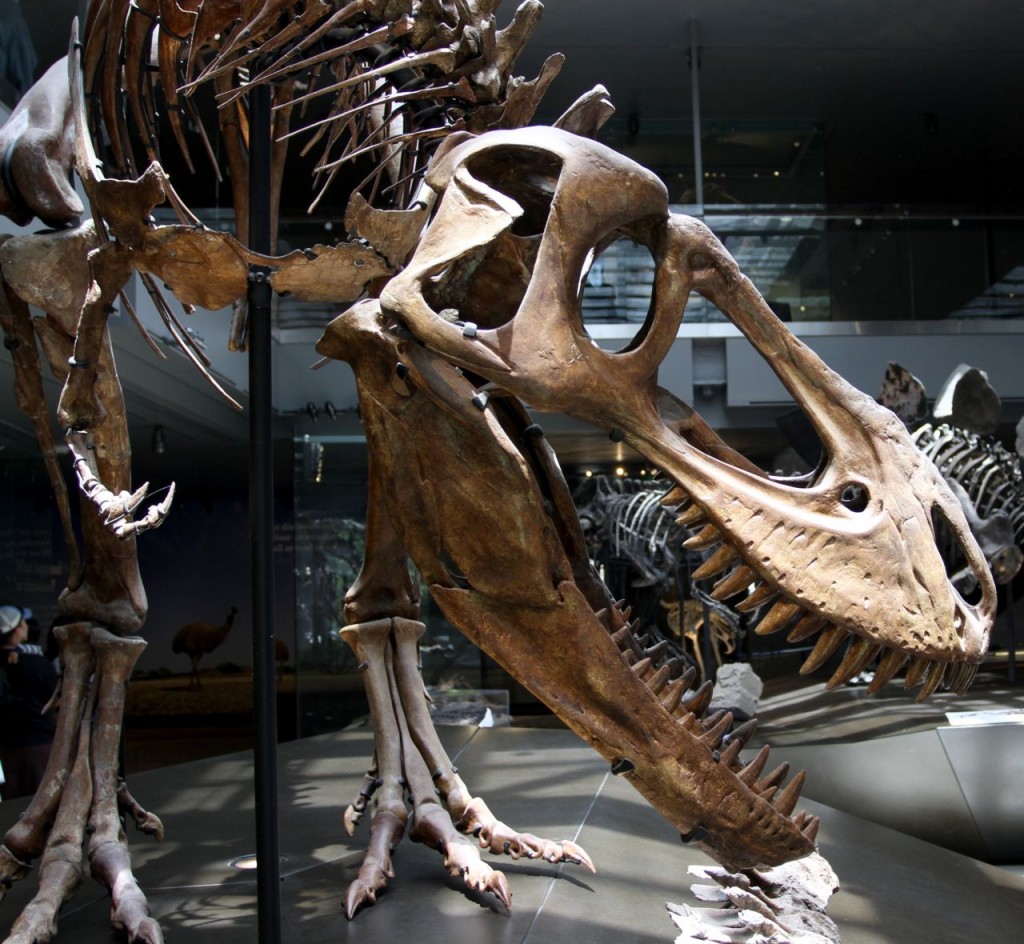
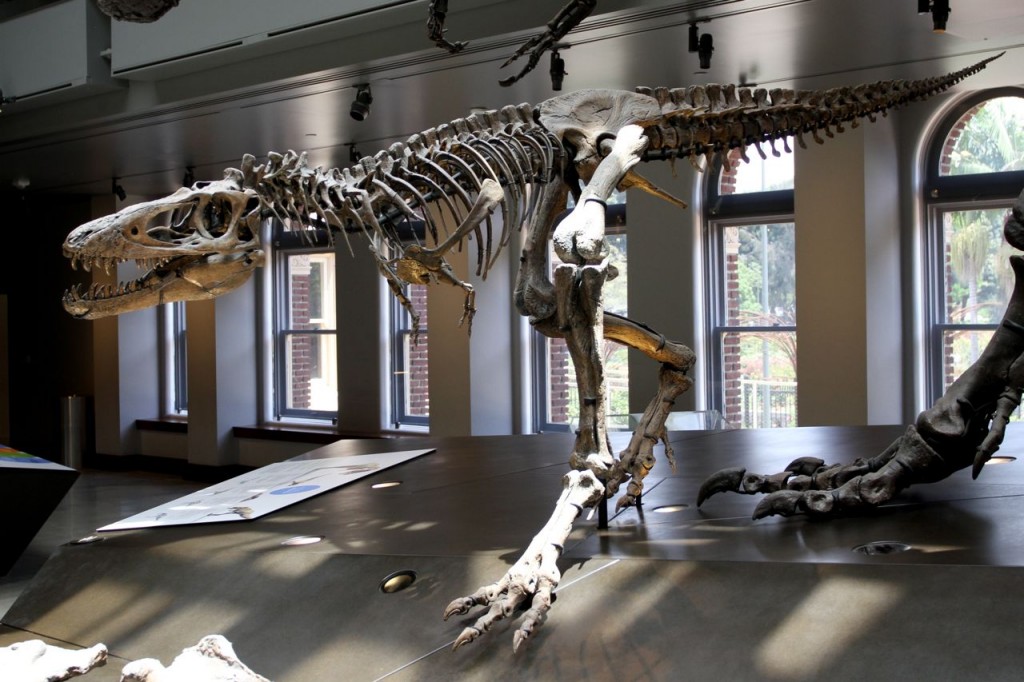
On a lighter note. Ever wondered what a Tyrannosaurus rex looks like with (most of) its bones missing? Probably not I guess, but here it is:
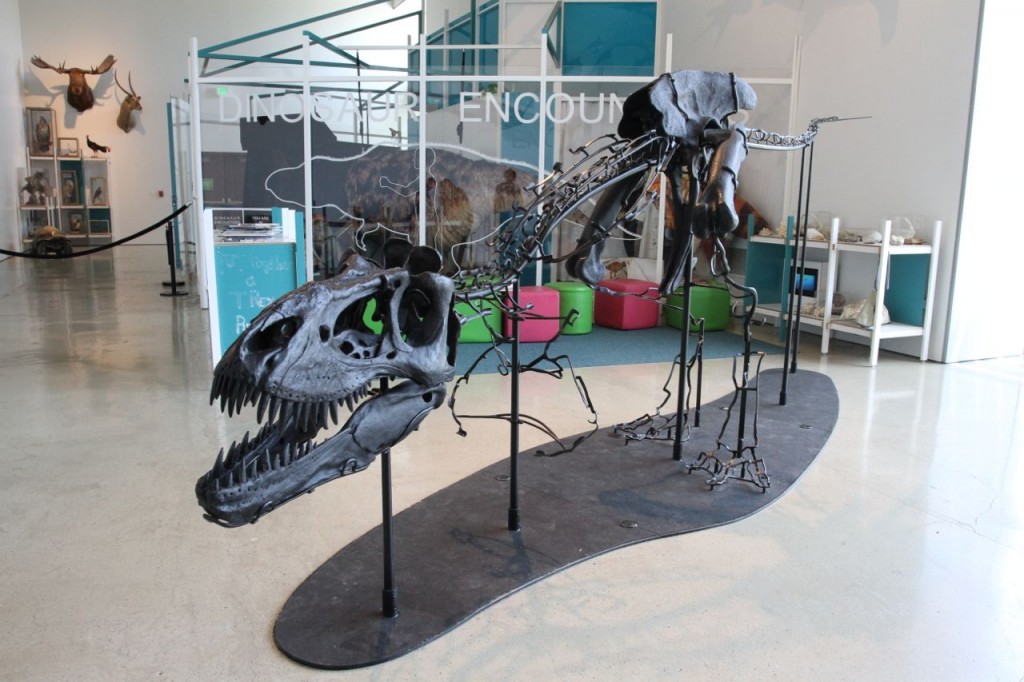
This was a bit of fun we got roped into: a Tyrannosaur puzzle no less. The bones of the T.rex are taken off the frame, and it’s up to us non-experts to put them back in the right place. It’s harder than you might think – and it makes you think! (Shh – that’s the point).
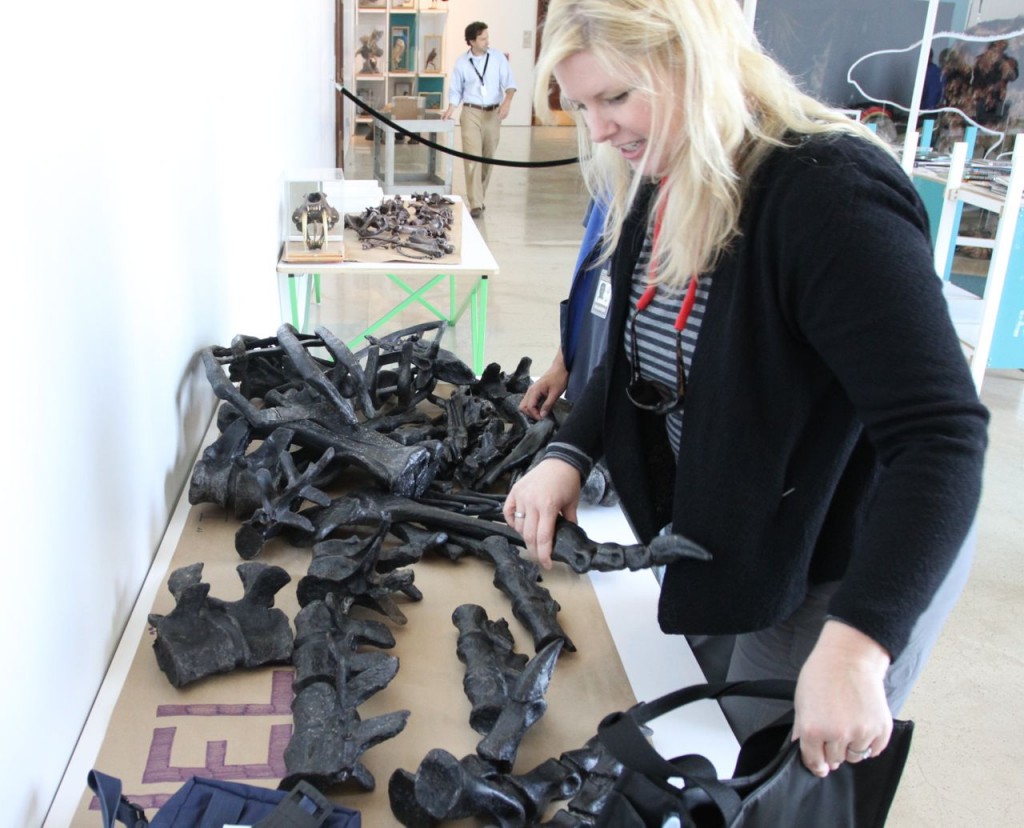
I got off to an easy start with those deceptively unimpressive fore-limbs we all know and love from Jurassic Park, but soon came to grief when it came to the ribs. Best leave things to the experts:
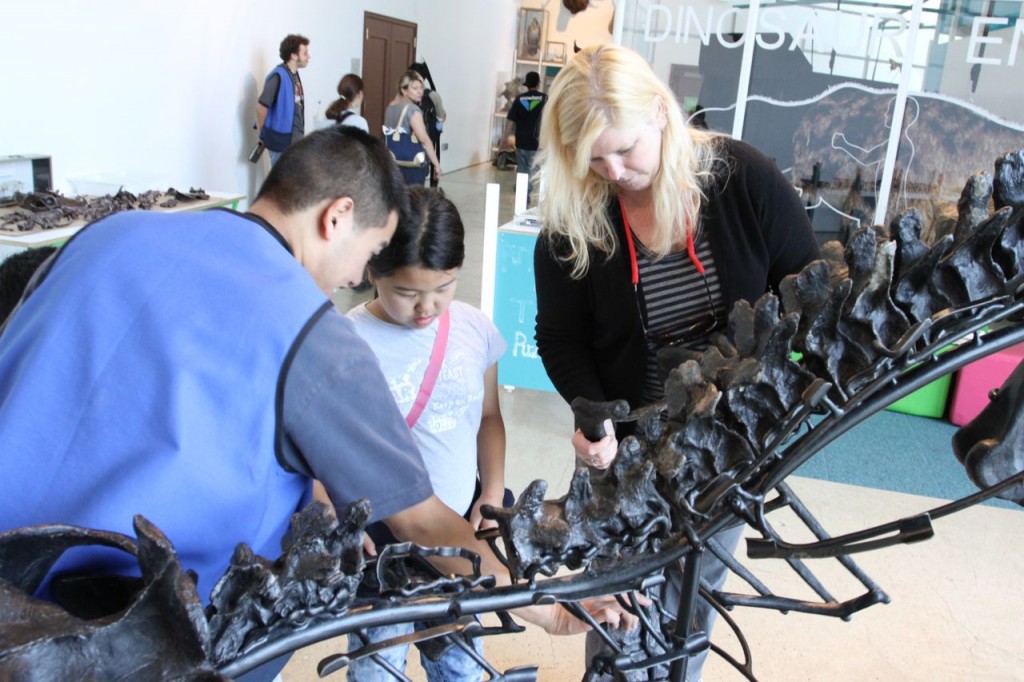
Assembling a Tyrannosaur is just like working on your car: there’s always an extra piece left over when you put it back together……
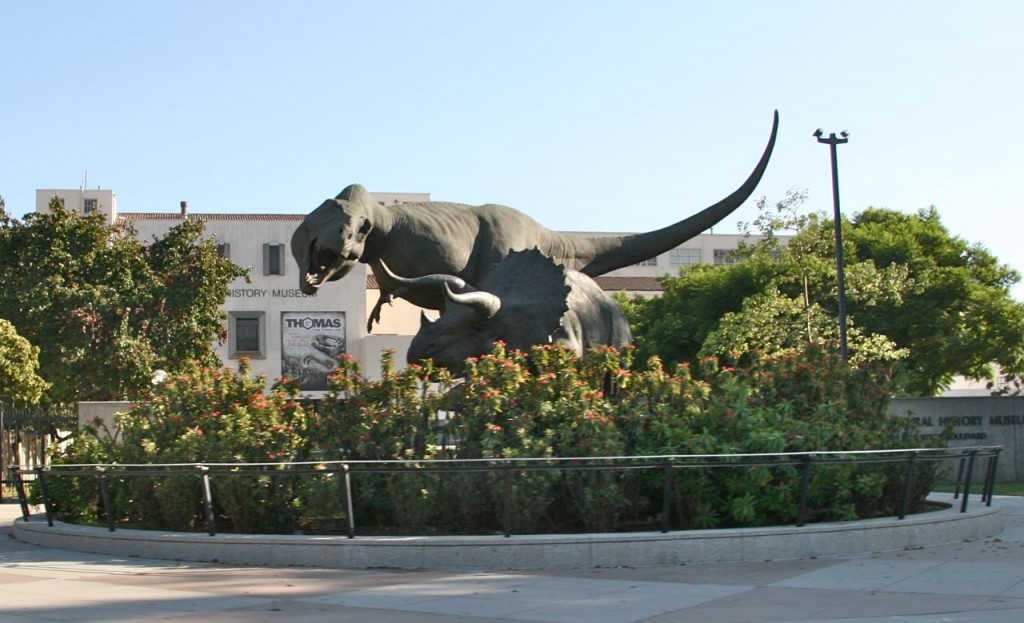
Great exhibition and well recommended. Thanks to NHMLA for an enjoyable afternoon.
